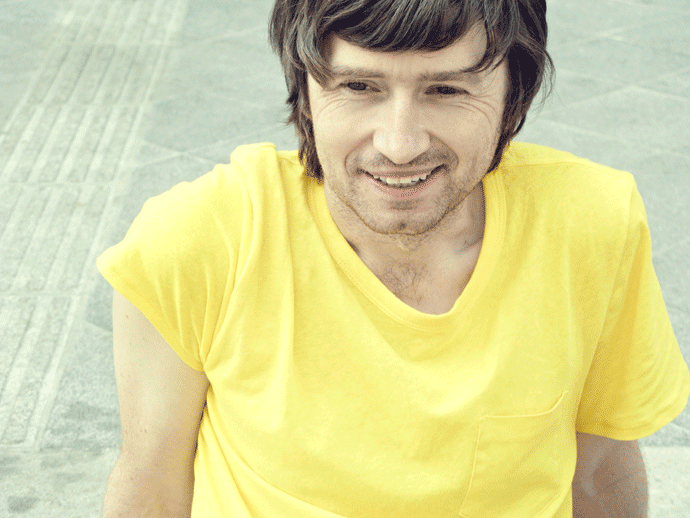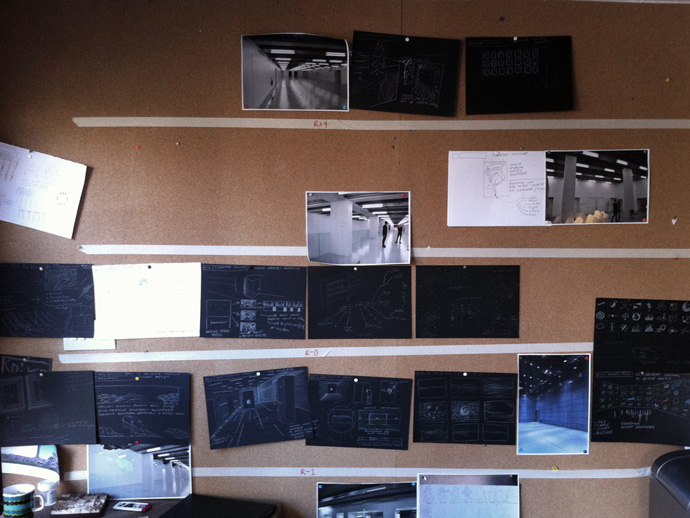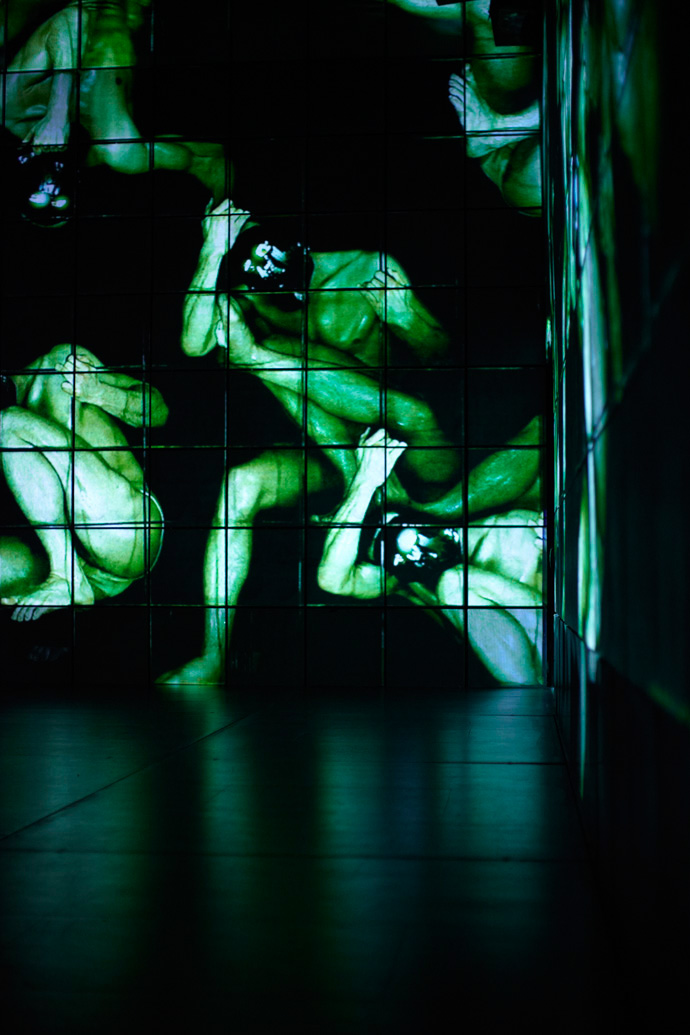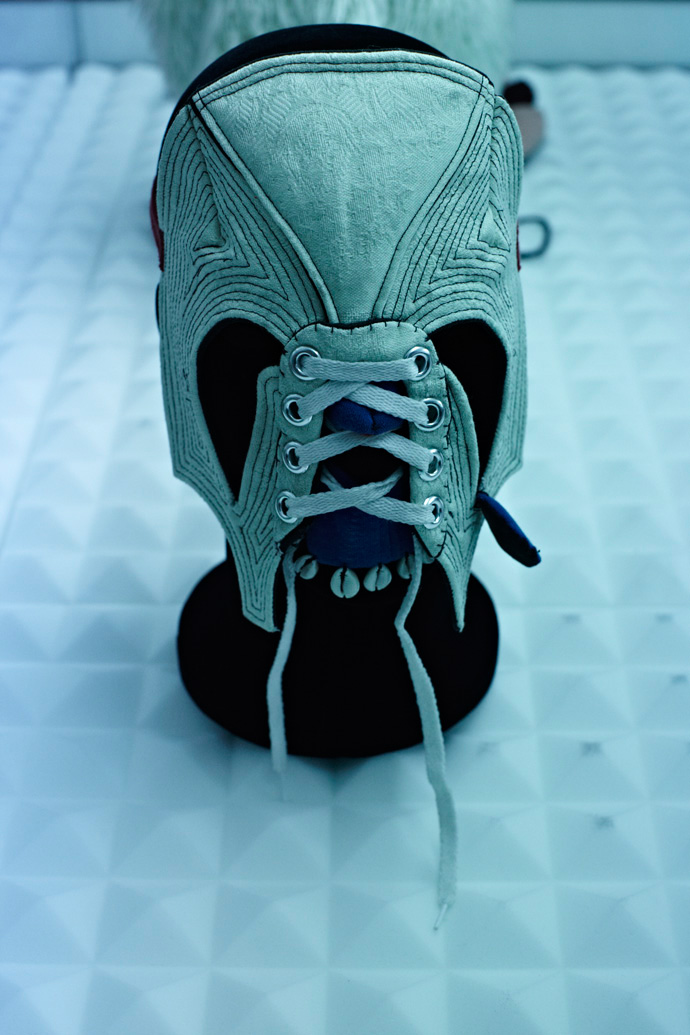-

MATT PYKE AND FRIENDS: that idea of foreverness
-The future is back.
That’s the impression you get from Matt Pyke’s new show at Gaîté Lyrique, Paris’ brand new digital creation center. Mutating monsters, illuminated silences, evolving creatures, disintegrating dancers, glowing trees… Pyke and his friends from the studio Universal Everything use every corner of new-old parisian theater to make your head swirl. Literally.
 Meet Matt Pyke. Photo by René Habermacher
Meet Matt Pyke. Photo by René HabermacherANTOINE ASSERAF: I noticed everything is looping, there is no beginning and no end. What as your intention with that?
MATT PYKE: One of the reasons for the looping is we’re really interested in the idea of infinity and how it creates video artworks which don’t really have a narrative story to them.
We’re creating almost a video sculpture, a state of mind or a trance-like situation: for example where dancers that are continually struggling up the wall to get to the sound or the giant walking monster in TRANSFIGURATION which is walking forever and nobody knows where he is going.
It’s that idea of foreverness and how you can use video to do that as an artwork that never stops: everything is almost like a machine that is going and going…
Matt Pyke & Friends : Super-Computer-Romantics
Sometimes you have some very un-digital elements like drawing.
I studied drawing and painting at art school and still find it very important to have a pencil as well as a computer. All of the artworks were based on drawings originally. The archive of the Gaîté Lyrique has a collection with all the working drawings from all the artpieces.
In the exhibition, the one called SEVENTY SIX SEEDS was entirely created through drawing but influenced by the more recent years where i’ve been working with people who use codes. The drawings are very much influenced by digital processes and the shapes that code make.
We’ve made an iPhone application that gave me kind of genetic instructions of what type of seed what type of plant to draw every morning- so it’s a way of using technology to control me, control my pencil.

 Works in Progress: left Matt Pykes drawings for SEVENTY SIX SEEDS inspired after an iPhone application.
Images Courtesy of Matt Pyke
Works in Progress: left Matt Pykes drawings for SEVENTY SIX SEEDS inspired after an iPhone application.
Images Courtesy of Matt PykeDo you code and program yourself or are you trying to bring that kind of “old school” thinking into that?
I intentionally do not code and program myself. I tried to learn and found it did not suit me, so I focus on the conceptual side of things and the visual side of things in terms of art direction and creative direction and come up with the initial seed idea and then work with programmers who are genuinely experts or super talent in their field.
I think one important thing is, by me not understanding code, that my ideas are not restricted to what is possible.









